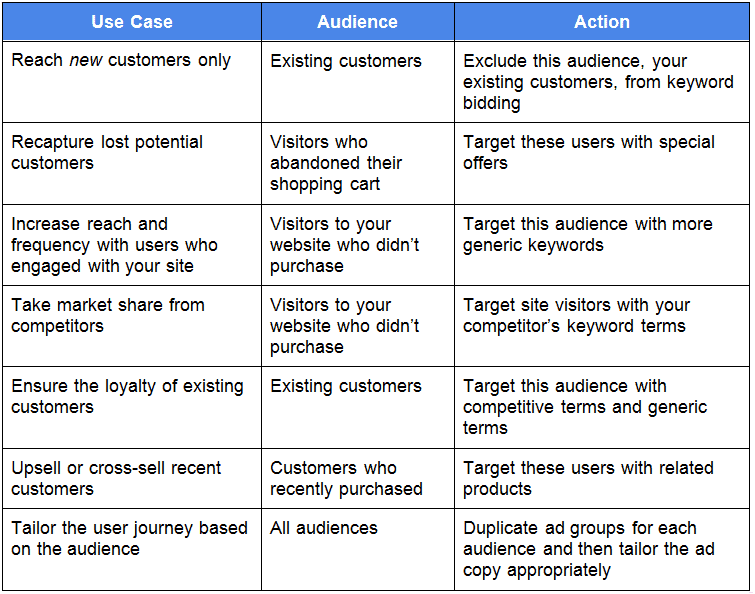RLSA, which is a fantastically hard to say and remember acronym for Remarketing Lists for Search Ads, is a powerful and yet relatively straight-forward new capability in search marketing.
How RLSA Works
To get started with RLSA, you create an audience, meaning a cohort of website visitors you wish to segment, by putting an AdWords pixel in different parts of your site. For example, to create an audience of people that have recently purchased on your site, you could put a pixel on your “thank you” page post purchase. When consumers get to that “thank you” page, the pixel fires, and Google puts a cookie on those people’s browsers and labels them whatever you want to call them, let’s say “converted customers”.
Once you have your audience built, you can then tell Google that when it sees those “converted customers” on Google search that you want to increase your bid. If Google sees that customer, it multiplies (in real-time) your bid for that keyword by the multiplier you told it for that audience. That then becomes your bid and, if you bid up sufficiently, your ad is more likely to appear higher on the page.
Examples of Audiences & Use Cases
To put RLSA into practice, here are four examples of audiences an online retailer might create:
1. Existing customers
2. Customers who recently purchased
3. Visitors to the website who didn’t purchase
4. Visitors who filled and then abandoned their shopping cart
Once you have your audiences defined, here are some sample RLSA marketing activities you could run:
Even more powerful, when marketers start to bring in performance information they can further optimize their RLSA efforts by only targeting their most valuable audiences, not just the broad audiences themselves.

